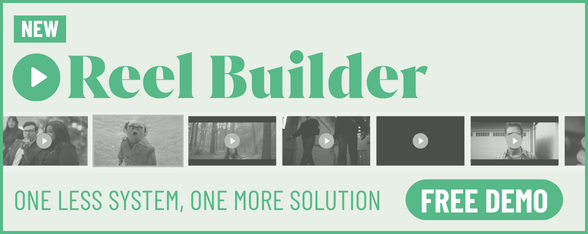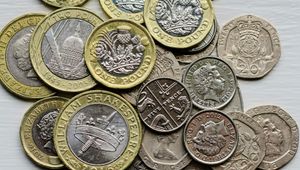
‘The Idea That My Best Work Is Still to Come… Gets Me Out of Bed in the Morning’: Creative Director Neil Richardson

Neil Richardson is creative director at Boldspace, based in London. Neil is a multi-award-winning creative director who has worked in advertising for longer than he'd like to admit, across agencies both big and small.
He first entered the industry after winning the D&AD Student Program. He honed his craft at agencies including WCRS, Soul, and SapientNitro, working on brands such as Nike, Volvo, Converse, and Coca-Cola. He then moved to Saatchi & Saatchi, where he served as Global Creative Director, followed by a similar role at Leo Burnett.
More recently he’s been flexing his skills at VCCP and fuelling his passion for sport working on brands such as Paddy Power and Liverpool FC at Octagon. Neil has found a new home working with the exceptionally talented people at Boldspace - a creative, branding and PR agency - where he is excited to be part of their next chapter.
LBB> Person - What kind of creative person are you?
Neil> I'm passionate about creativity – it's such an important part of my life. That said, it often shows up in quite an internal way. I'm not the type to verbalise every thought or rapid-fire ideas like the guy from the old micro machines advert (look it up, kids). I prefer having a bit of space to get lost in my own head. I’d say I shift between being an introvert and an extrovert, depending on the situation and who I’m hanging out with.
I think having the word ‘creative’ as part of a job title must be a tiny bit like how a comedian feels – there’s a tinge of an expectation to act a certain way: “Go on, say something funny.” “Do something creative.” The truth is, for me anyway, that sometimes creative inspiration comes easily, but a lot of the time it takes elbow grease and patience.
I’m in total awe of truly creative people – artists, musicians, even chefs. I believe everyone can be creative, a lot of it comes down to what gets your juices flowing and what inspires you to put in the extra effort to get where you want to be.
LBB> Product - How do you judge the creativity of a piece of work?
Neil> It’s a cliché, but it really does come down to how it makes you feel. The best ideas give you a flutter of excitement – an endorphin hit – and often an enormous sense of relief, especially if you’re up against a deadline.
There’s nothing like the feeling of knowing a brief has been cracked. From that point on, it’s about doing everything possible to keep the idea alive. One of the biggest shames in our industry is that so many incredible ideas never get to live in the real world.
Some pieces of work reveal themselves instantly as real bangers straight off the bat. Others take a bit more time to evolve – from a ‘there’s something in it’ to that ‘something’ becoming the thing. I love ideas that have a real sense of bravery to them and anything that makes me chuckle is on the right track.
I think the standard of creative thinking in the industry is still high. That said, it’s definitely more challenging than when I first started out – we're constantly competing for attention, now to almost ridiculous levels. So maybe there’s more pressure for ideas to hook the viewer faster than ever before.
When it comes to the work I'm most proud of, I feel very privileged to have worked with so many great brands. I've especially enjoyed the larger repositioning projects – where the goal is to completely shift the perception and direction of a brand. There's something really rewarding about bringing creativity to sectors that aren’t typically known for it and helping them feel fresh and exciting.
I like the idea that my best work is still to come. That’s what gets me out of bed in the morning.
LBB> Process - Tell us about how you like to make creative work.
Neil> I find I do most of my thinking during the quiet times of the day – either last thing at night or, more often, in the very early morning. I love the hours between about 5 and 8 am, when you’re in a bit of a bubble and the pinging of the Teams chat hasn’t kicked in yet.
You kind of feel like you won’t be disturbed, and I think I need that stillness to really get lost in a project.
The more ‘normal’ nine to five hours are really about collaboration. I genuinely believe that great creative ideas can come from any department, and I love seeing how differently people’s brains work – especially in a place like Boldspace, where there’s such a wide range of skillsets.
At the beginning of every project, I try to start with a clean, uncluttered desktop – both physical and digital. It feels like a good way to reset and clear my mind. By the end of the project, it’s usually a complete mess, but it’s nice while it lasts.
I don’t have a specific thinking technique that I always use. I’ve seen a lot over the years – like huge, sprawling spider charts where you literally dump the contents of your brain onto paper. It always looks really cool, but I’m not sure I’d want people to see what’s going on in my head – they’d probably look at me funny.
If I’m hitting a wall on a project, going for a walk or a run really helps. I think the ‘overnight test’ is crucial. Projects where you’re briefed in the morning and expected to present ideas by the afternoon just don’t sit well with me.
I’m not sure a piece of work is ever truly ‘done.’ You could probably keep tweaking and prodding it forever. But the reality is there’s always another project waiting, and you’ve taken it as far as you reasonably can. Plus the money guys will soon let you know when you need to stop.
LBB> Press - What external factors have shaped you and what can make or break a creative project?
Neil> I grew up in a household where everyone worked in the media. My dad was one of the first strategic planners during the heyday of advertising, and both my mum and sister were in PR. I guess, in my case, the apple didn’t fall far from the tree.
I remember my dad showing me a “Heineken refreshes the parts...” and he worked on, which just happened to be on a big poster site right near our house. I think I was inspired by both the humour and the scale of it, and I still get a buzz today from working on projects that start as a few words or scribbles on a page and end up out in the real world.
I didn’t take the traditional advertising college or art school route - I studied geography and psychology at uni. I can’t remember much of what I learned, but maybe, deep down, it gave me some insight into human behaviour.
These days, the people around me are the biggest influence – whether it’s the super smart people I work with, or my friends and family. I’m constantly inspired by creativity in all its forms. You’ll often find me pottering through galleries, catching a play, or going to as many gigs as I can.
What can make or break a creative project? Communication – at all levels, both internally and between agency and client – is absolutely key. Even quick check-ins can make a big difference. When everyone’s aligned, potential issues get spotted early, collaboration flows more naturally, and the team feels closer. On the flip side, if things are left to fester, it’s easy for problems to grow and things head south pretty quickly.















